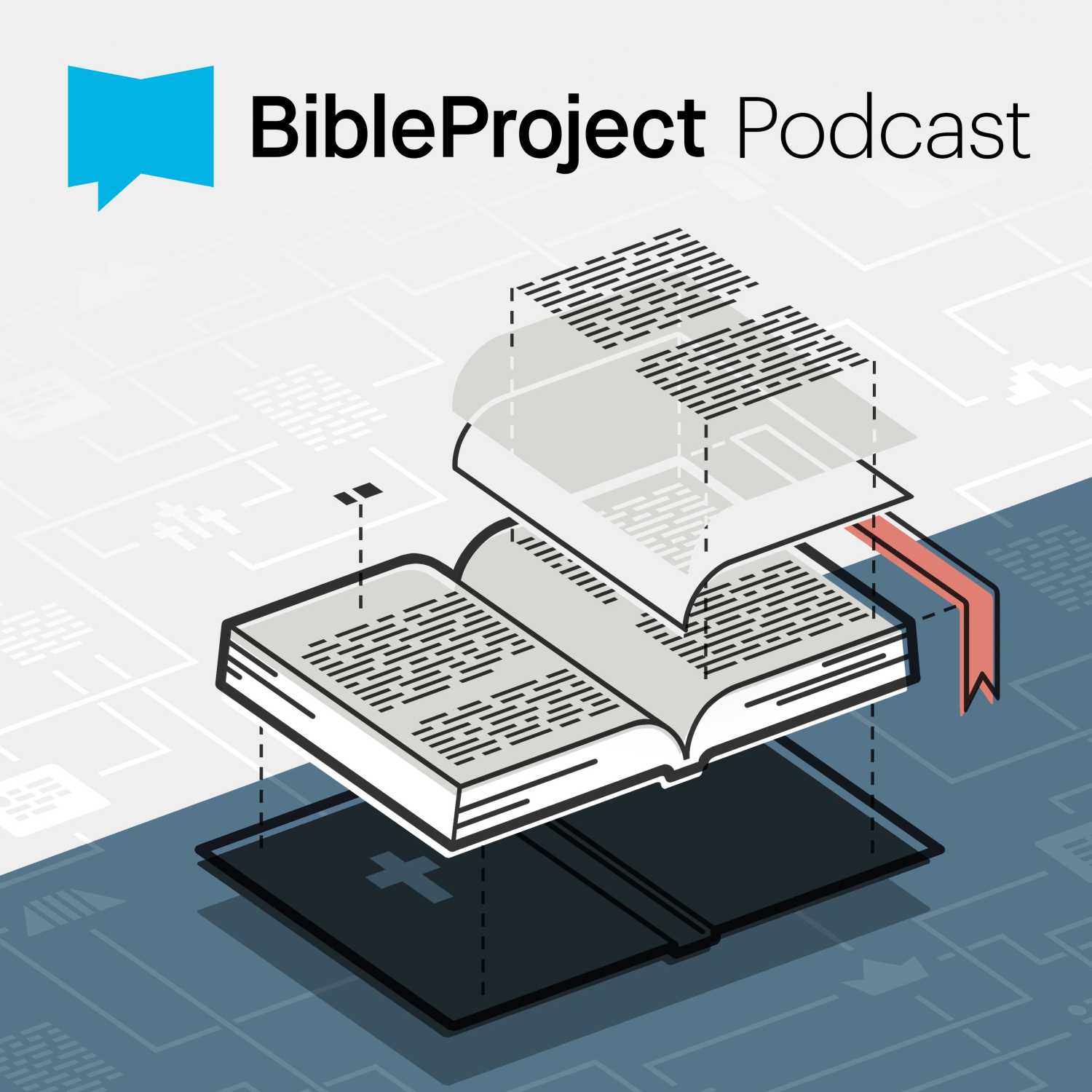.png)
Bible Basics
Welcome! The Bible Basics Podcast is designed to make the Bible approachable and accessible for all, particularly those who are new to the faith or curious about the Bible. Each episode focuses on a specific topic, breaking it down into bite-sized chunks and offering foundational knowledge about the Bible's structure, types, writing, and storyline. The ultimate goal is to increase listeners' comfort level with the Bible and deepen their relationship with God through reading His Word.
Click this link to send us a message:
https://www.buzzsprout.com/twilio/text_messages/2180587/open_sms
Bible Basics
The Formation of the Biblical Canon: Inspired and Complete
Ever wondered how the books of the Bible were chosen? Join the Bible Basics Poscast as we chart the historical journey that led to the compilation of the Biblical Canon. We’ll explore the early church's rigorous process to recognize God-inspired writings, a fascinating story that involves battling heresies and enduring persecution. Discover how ancient rods of measurement relate to spiritual truths and how the 27 New Testament books gained recognition. This episode is more than just a lesson in history; it's an invitation to appreciate the Bible's authoritative and inspirational qualities that have been cherished since the apostles' time.
We'd love to hear from you - Click Here to Text Us a Message.
Have questions about what it means to follow Jesus?
Whether you’re just starting your faith journey or exploring what the Bible teaches, we’d love to walk with you. God’s invitation is real, personal, and full of grace.
💬 Reach out to Jacqui at info@bible-basics.org
📖 Talk to a trusted Christian in your life
🏠 Or visit a Bible-believing church near you
You are not alone. God’s Word is alive, and He is still drawing people to Himself today. Don’t hesitate to take the next step.
Thank you for tuning in!
Bible Basics is now streaming in video on Youtube. Please subscribe now!
Feel free to contact us at info@bible-basics.org. We would love to hear from you!
Note: All scripture references are from the NIV translation unless otherwise indicated.
What's that? It sounds like an explosion. Oh, it's a cannon. I need to talk to my sound effects guy. He heard today's episode was on the canon. No, not that kind of cannon, that one is spelled C-A-N-N-O-N. We're going to talk about the C-A-N-O-N, the Biblical Canon. Ohhhh. Anyway, stay tuned to this episode of the Bible Basics Podcast where you, along with my sound effects guy, can join in on a discussion of what the canon actually is. Well, welcome everyone. I'm your host, Jacqui Adewole, and this is the Bible Basics Podcast, where weekly, we break down the Bible into understandable, bite-sized chunks.
Jacqui:Our journey begins near the end of the first century, around 96 AD. By this time, the documents that formed the Old and New Testament were already written and being circulated among early Christian communities. Now, how did this assortment of writings transform into what we call the cannon today? Well, let's look. First. Look at that term cannon C-A-N-O-N. It's the official list or a collection of books that make up the Bible. The term cannon itself has roots in the rods crafted by people in the ancient Near East, much like our rulers of today. These rods, made of papyrus, were meticulously cut and marked to ensure uniform measurements. This term went on to symbolize the collection of books that measure up as inspired by God. These books, the canon, are the inspired word of God. The process of forming the canon, called canonization, did not establish which books were inspired by God. Instead, canonization was the process of recognizing which books were inspired by God. So why do we even need a canon? Well, the early church leaders recognized the necessity of establishing this cnnon for a few reasons. The primary reason was the need for a standard or measuring rod to identify and reject heretical teachings, that is, teachings that were counter to God's word. Additionally, facing intense persecution, especially during the Roman Emperor Diocletian's reign from 303-312 AD, the church needed to stabilize itself and prevent the loss of sacred writings.
Jacqui:Now let's explore the Old Testament. Rooted in ancient Judaism, the meticulous selection of sacred texts involved Jewish scholars identifying essential teachings and principles. These Hebrew scriptures, called the Tanakh, include the same 39 books as the Christian Old Testament, but counts and arranges them differently. Jesus himself endorsed the Hebrew scriptures, which later became the Old Testament canon. This is made clear from the following words of Jesus to the religious leaders he spoke you study the scriptures diligently because you think that in them you have eternal life. These are the very scriptures that testify about me. This was out of John 5:39. Note that Jesus told them to search the Scriptures. He did not define what he meant by the term Scriptures. He did not have to explain it. They knew exactly what he was talking about. Another indication of the acceptance of the Hebrew Scriptures was that there were almost 300 quotations of these Old Testament Scriptures in the New, emphasizing their authority.
Jacqui:Now, transitioning to the New Testament now we immerse ourselves into the life and teachings of Jesus Christ. Eye witnesses and early Christian communities document their experiences leading to the emergence of what we now call the Gospels, Acts of the Apostles and the Epistles. The New Testament came to include 27 books that were recognized as being the Word of God. Let's look a bit at how the early church did that. Throughout the time when the books of the Bible were written and afterward, other literature was being produced which was asserted to be the Word of God. This led godly believers to develop certain tests by which to judge the validity of these claims. The application of these tests does not make them canon, because God is the one who determines what literature is in the canon. However, these tests enable the church to recognize whether or not any literature is of the canon.
Jacqui:Here are the four most significant questions or tests for determining if a writing would make it into the canon. The first test, known as the Orthodoxy Test, focuses on the biblical nature of the books. The New Testament must align with the Old Testament, avoiding contradictions. For example, certain books like the Gnostic Gospels were promptly dismissed due to teachings inconsistent with biblical principles, especially regarding creation and salvation. The continuity and agreement with God's unfolding plan throughout history are essential criteria. The second test, the Apostolicity Test, evaluates whether a text can be traced back to the apostles or to those who are inf indirect, closely associated with them. The key question was whether or not it was written by an apostle or close associate. Matthew was an apostle who was present for most of what he wrote in his gospel. Paul was not technically an apostle of Jesus, but he had a direct encounter with him on the road to Damascus. Luke was not an apostle either, but he got his information from firsthand sources who walked with Jesus.
Jacqui:The third test was the test for widespread use. It examined the widespread acceptance of books by Jews and or the Christian church as God's word. This test focused on the universal recognition of a text across diverse communities. Is it received, recognized, circulated and used by believers. For instance, even though Paul wrote at least three letters to the Corinthian church, only two gained marks of canonicity due to extensive circulation. Schools and epistles carrying authority inspired traveling Christians to reproduce and distribute them widely, ensuring broader recognition beyond specific regions. Lastly, the books recognized as part of the canon were divinely inspired. The books did not become inspired because they are recognized as being canonical. Rather, they are recognized as being canonical because they are inspired by God. By examining these four significant tests, the early church sought to ensure the canonicity of the books that now form the foundation of the Christian Bible.
Jacqui:The consolidation of the New Testament canon involved a gradual process culminating in the councils of Hippo and Carthage in the late 4th century, approximately 367 AD. Church leaders carefully examined writings, considered the doctrinal consistency, connection to the apostles and widespread acceptance. It's crucial to note that the church's role was not to decide on authority and inspiration of various books, but to formally recognize books that already met those criteria. This recognition came after long and careful investigation. Christians believe that the Holy Spirit guided the church fathers in recognizing the inspired books. Jesus promised in John 14:26 that the Holy Spirit" will teach you everything and remind you of all that I have said to you, we as Christians believe the Holy Spirit was responsible not only for inspiring the authors of the New Testament books, but also guiding the church fathers to recognize them in the canon. This final factor should give objective observers confidence that the right books were accepted and that the Bible we have today is the complete inspired Word of God.
Jacqui:As we conclude this journey through the formation of the biblical canon, may this deepen your appreciation for the sacred scriptures. Know that "our Bible measures up to the authority and inspiration Christians have always recognized since the days of the apostles. God's Word is a precious gift. We may read it with confidence. If you found this episode helpful, informative or inspirational in any way, would you please share with someone you know who needs to hear it? You can do that by sharing the podcast's website, bible-basicsorg, or you can click on the share button right where you're listening now. In closing, may the grace and peace of God be with you now and always.
Podcasts we love
Check out these other fine podcasts recommended by us, not an algorithm.

Is Your Way In Your Way?
Cassandra Crawley MayoDisciple Dojo
JM Smith
Everything Everywhere Daily
Gary Arndt
Grammar Girl Quick and Dirty Tips for Better Writing
QuickAndDirtyTips.com